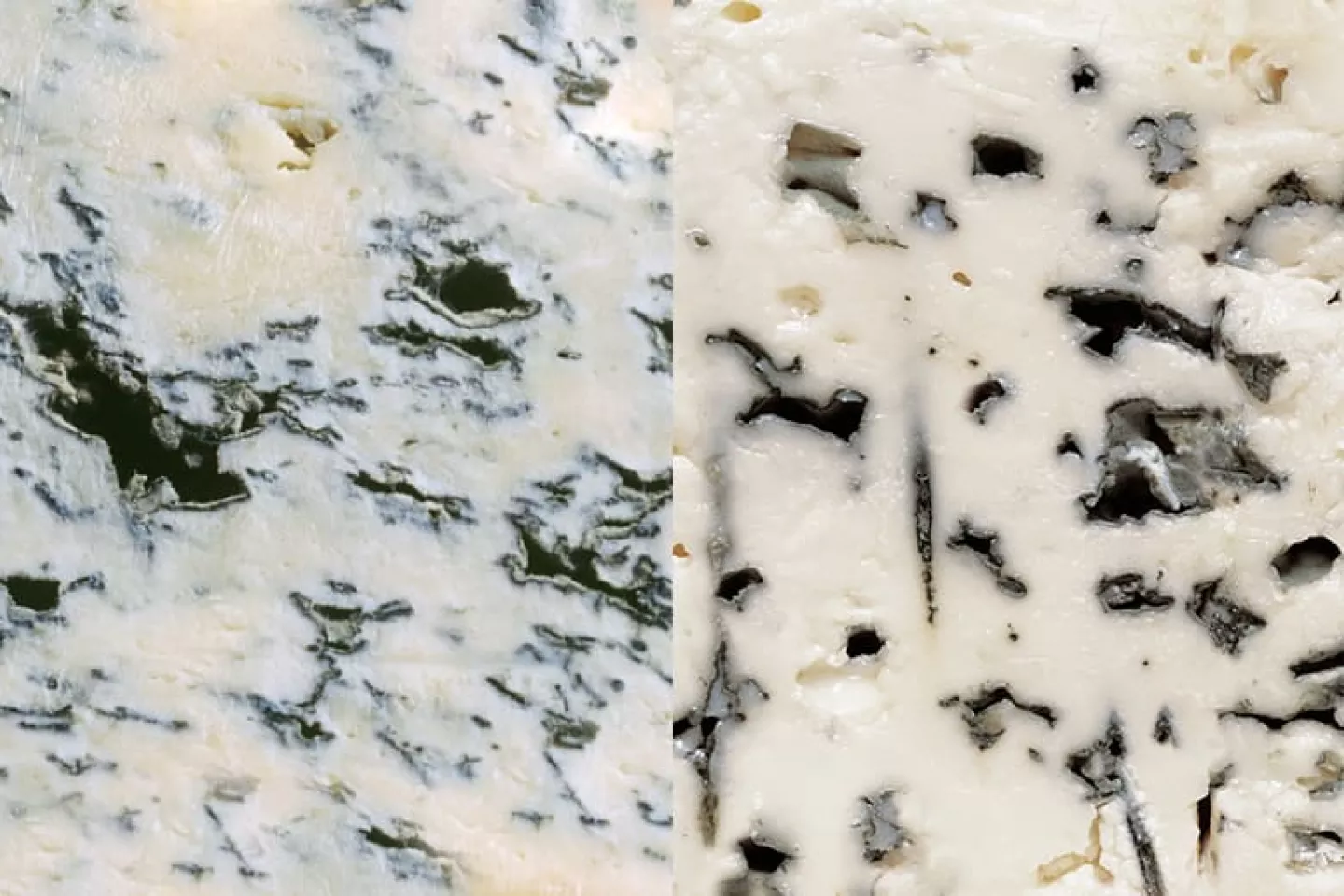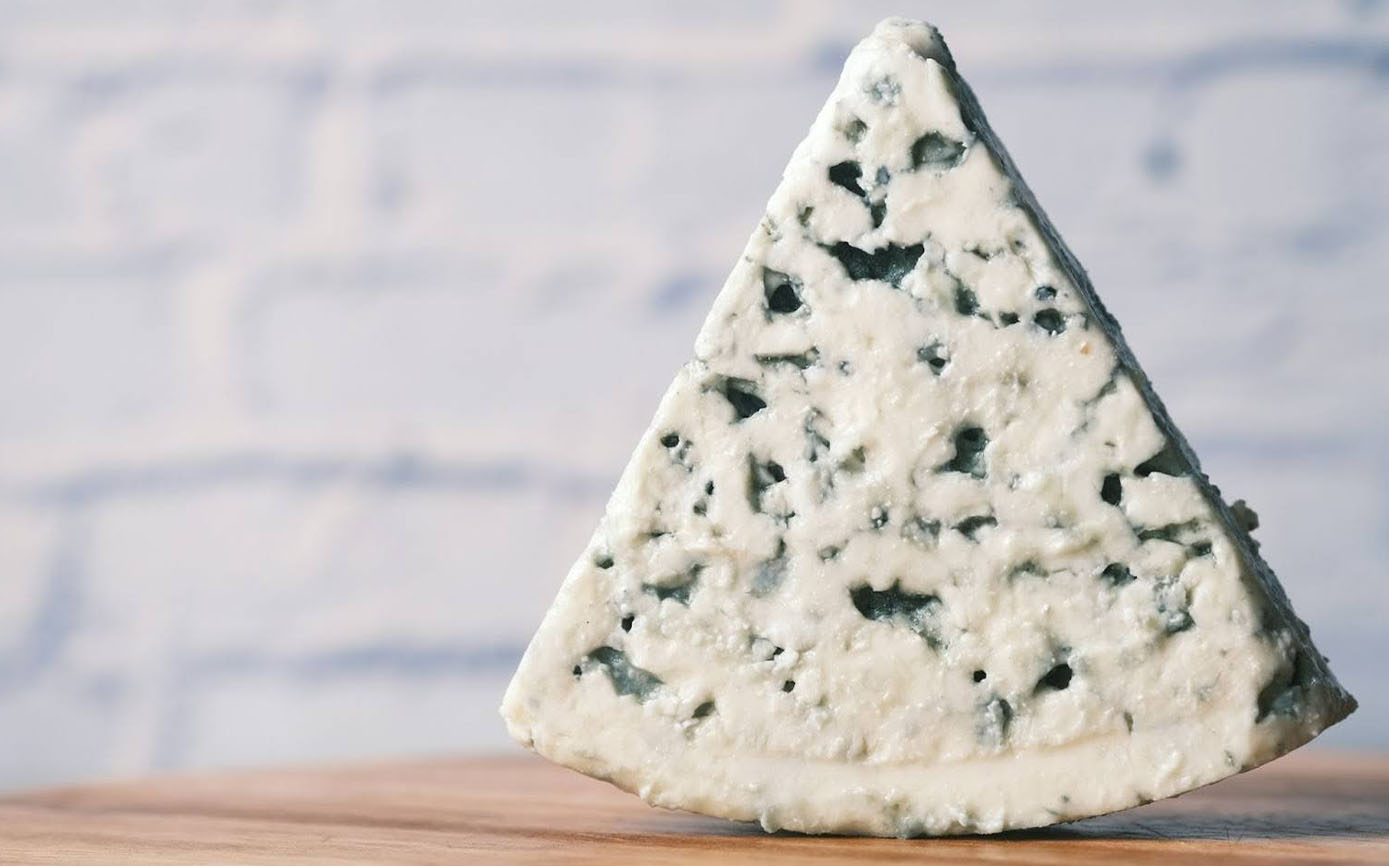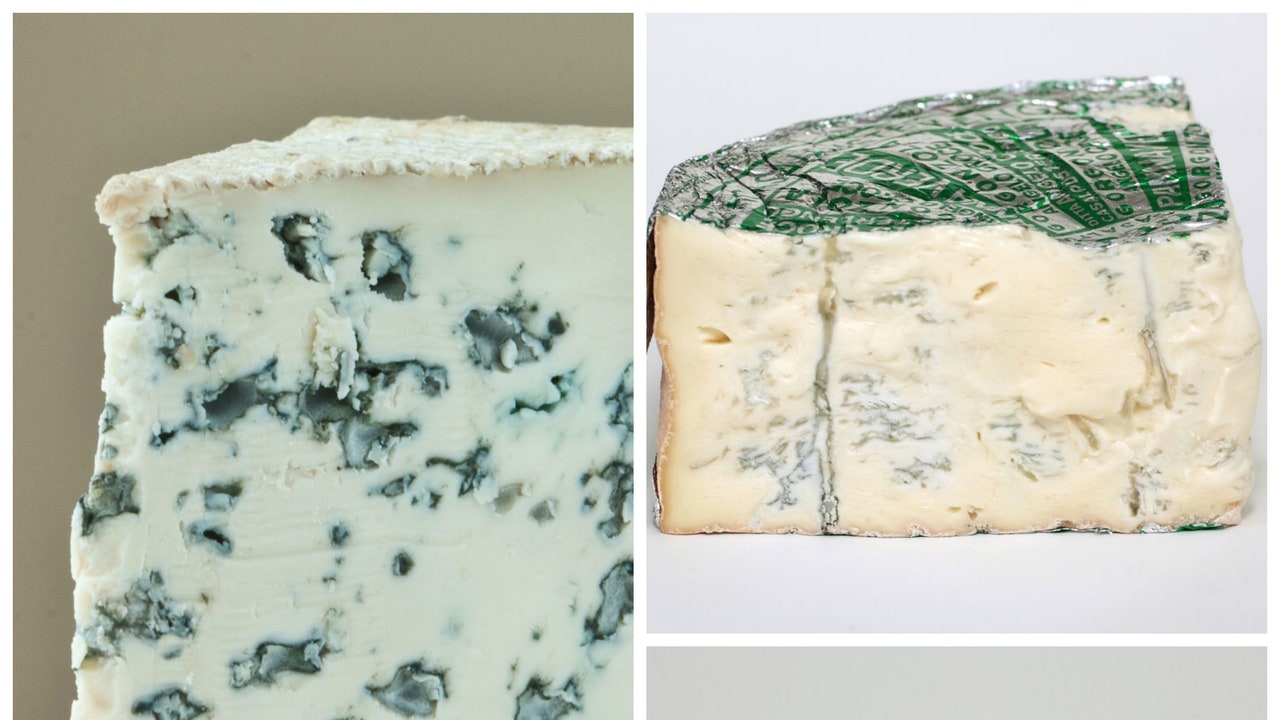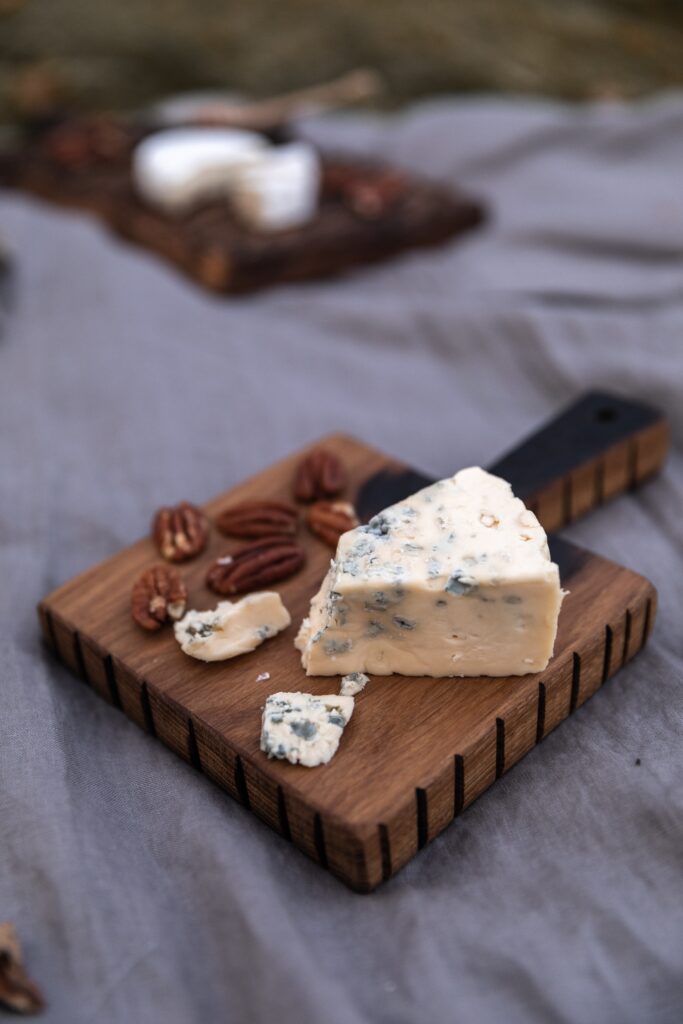Gorgonzola Cheese: A Classic Italian Delicacy

Gorgonzola cheese, a classic Italian delicacy, is revered for its rich history and distinctive flavor. This cheese hails from the Lombardy region of Italy and is named after the town of Gorgonzola. Made from cow’s milk, Gorgonzola cheese undergoes a unique aging process that imparts its tangy and creamy characteristics. With its crumbly yet creamy texture and bold, complex flavor, Gorgonzola cheese adds depth and sophistication to various culinary creations. Whether used as a topping for salads, a decadent addition to pasta dishes, or simply enjoyed on its own, Gorgonzola cheese is a true delight for cheese connoisseurs.
Gorgonzola Cheese Origin And Characteristics
Hailing from the Lombardy region of Italy, Gorgonzola cheese has a rich history and distinctive characteristics. It is named after the town of Gorgonzola and is made from cow’s milk. The cheese undergoes a unique aging process that gives it its tangy and creamy qualities. Gorgonzola cheese is known for its crumbly yet creamy texture, making it a delight for cheese connoisseurs. Its bold and complex flavor adds depth to various culinary creations. Whether used in salads, pasta dishes, or enjoyed on its own, Gorgonzola cheese remains a classic Italian delicacy.
Gorgonzola Cheese Taste Profile And Texture
Gorgonzola cheese is known for its bold and complex flavor. It has a distinctive tangy and salty taste, accompanied by a rich creaminess that adds depth to dishes. The blue veins running throughout the cheese contribute to its unique flavor, providing a slightly spicy and piquant quality. The cheese has a crumbly yet creamy texture, making it a delight to savor. Its creamy consistency allows it to melt beautifully when used in cooking, adding a lusciousness to sauces and toppings. Whether enjoyed on its own or incorporated into recipes, Gorgonzola cheese offers a flavorful and textural experience.
Blue Cheese: A Tangy And Creamy Delight

Blue cheese is renowned for its distinctive tangy and creamy flavor. It offers a unique taste experience with its bold and pungent profile. The cheese is characterized by its tanginess, which comes from the blue veins running through it. These veins, created by the introduction of Penicillium mold, add a pleasant sharpness to the cheese. Blue cheese also has a creamy texture that melts in your mouth, further enhancing its delightful flavor. Its creamy richness makes it a perfect addition to salads, sauces, and even desserts. With its tangy and creamy characteristics, blue cheese is a true delight for cheese enthusiasts.
Blue Cheese Varieties And Production
Blue cheese is produced in various forms, each with its own unique characteristics. Some popular varieties of blue cheese include Roquefort, Stilton, and Gorgonzola. These cheeses are made by introducing Penicillium mold into the cheese during the production process, which leads to the development of blue veins throughout the cheese. The production of blue cheese involves aging the cheese in a cool environment for several weeks to allow the mold to grow and develop its distinct flavor and texture. The specific methods and ingredients used in the production can vary, resulting in different flavor profiles and textures for each variety of blue cheese.
Blue Cheese Flavor Profile And Culinary Uses
Blue cheese is known for its bold and intense flavor. It has a strong, tangy, and salty taste that can range from mild to robust. The distinctive flavor is a result of the Penicillium mold that develops in the cheese during the aging process. Blue cheese has a creamy and crumbly texture, making it easy to spread or crumble into dishes.
In culinary applications, blue cheese adds a punch of flavor to both savory and sweet dishes. It is commonly used in salads, dressings, and sauces, where its creamy and tangy notes complement the other ingredients. Blue cheese can also be incorporated into pasta dishes, burgers, and grilled meats for added richness and depth. Additionally, it pairs well with fruits like pears and apples, as well as honey and nuts, for a delightful combination of sweet and savory flavors.
Gorgonzola Vs Blue Cheese: A Side-by-side Comparison

When comparing Gorgonzola cheese and Blue cheese, there are a few key differences to consider. Gorgonzola cheese originates from Northern Italy, while Blue cheese is a broader category that includes various types of cheese with blue mold. In terms of taste, Gorgonzola has a crumbly texture and a saltier, milder flavor compared to the sharper and tangier taste of Blue cheese. Gorgonzola is typically made from unskimmed cow’s or goat’s milk, while Blue cheese can be made from cow’s, sheep’s, or goat’s milk. Overall, it comes down to personal preference and the desired flavor profile for your culinary creations.
Gorgonzola Vs Blue Cheese: Aging Process
During the aging process, Gorgonzola cheese and Blue cheese undergo different techniques that contribute to their distinct flavors and textures. Gorgonzola is typically aged for 2 to 3 months, resulting in a creamy and less crumbly texture. On the other hand, Blue cheese is aged for a longer period, usually ranging from 2 to 12 months. This extended aging allows the blue mold to develop fully, giving Blue cheese its signature tangy and sharp taste. The aging process plays a significant role in shaping the unique characteristics of these pungent cheeses.
Gorgonzola Vs Blue Cheese: Nutritional Value
When comparing the nutritional value of Gorgonzola cheese and Blue cheese, there are some similarities and differences to note. Both types of cheese are rich in protein and calcium, which are essential for building strong bones and muscles. However, Gorgonzola cheese tends to be higher in calories and fat content compared to Blue cheese. One ounce of Gorgonzola cheese contains approximately 100 calories and 9 grams of fat, while the same amount of Blue cheese contains about 80 calories and 6 grams of fat. It’s important to consume these cheeses in moderation as part of a balanced diet.
Gorgonzola Cheese In Culinary Applications

Gorgonzola cheese is a versatile ingredient that adds a rich and creamy flavor to various culinary creations. Its unique taste makes it a perfect addition to both savory and sweet dishes. Gorgonzola can be crumbled over salads, melted into pasta sauces, or incorporated into risottos and pizzas. It pairs exceptionally well with fruits like pears and figs, creating a delightful combination of sweet and savory flavors. Additionally, Gorgonzola can be used in dips, spreads, and even desserts like cheesecake or stuffed dates. Its versatility in the kitchen allows for endless opportunities to enjoy its distinctive taste.
Gorgonzola Cheese Pairing With Foods And Wines
Gorgonzola cheese’s unique flavor profile makes it a versatile ingredient in various culinary creations. When it comes to pairing, Gorgonzola cheese pairs exceptionally well with a variety of foods and beverages. Here are some popular pairings:
Foods:
- Fruits: Gorgonzola cheese complements the sweetness of fruits like pears, figs, and grapes.
- Salads: Sprinkle crumbled Gorgonzola cheese over a salad with mixed greens, nuts, and balsamic vinaigrette.
- Pasta dishes: Add melted Gorgonzola cheese to creamy pasta sauces for a rich and tangy flavor.
- Pizza: Incorporate Gorgonzola cheese into your pizza toppings for a delicious twist.
Wines:
- Sweet white wines: Gorgonzola cheese pairs well with sweet white wines like Riesling or Moscato.
- Red wines: Rich and full-bodied red wines like Cabernet Sauvignon or Merlot complement the bold flavors of Gorgonzola cheese.
These pairings enhance the flavors and create a delightful balance between the creamy, tangy Gorgonzola cheese and other ingredients.
Gorgonzola Cheese Recipes For Cooking Inspiration
For those who want to get creative in the kitchen, Gorgonzola cheese offers endless possibilities. Here are a few Gorgonzola cheese recipes to inspire your culinary adventures:
- Gorgonzola Stuffed Mushrooms: Fill large mushroom caps with a mixture of Gorgonzola cheese, breadcrumbs, and herbs, then bake until golden and bubbly.
- Gorgonzola Pasta: Toss cooked pasta with a creamy Gorgonzola sauce made with butter, garlic, cream, and the cheese. Top with fresh herbs for an extra burst of flavor.
- Gorgonzola Crostini: Spread slices of toasted baguette with Gorgonzola cheese and top with caramelized onions or fig jam for an elegant appetizer.
Whether you’re looking for a delicious appetizer, a flavorful pasta dish, or a unique twist on a classic recipe, these Gorgonzola cheese recipes will surely impress your taste buds.
Blue Cheese In Culinary Applications

Blue cheese is a versatile ingredient that adds a unique and bold flavor to a variety of dishes. It pairs well with fruits such as pears and apples, making it a delicious addition to salads or charcuterie boards. Its creamy texture and tangy taste make it a perfect choice for dressings, dips, and spreads. Blue cheese can also elevate the flavor of burgers, steaks, and other grilled meats. For a gourmet twist, try incorporating blue cheese into stuffed chicken breasts or mashed potatoes. The possibilities are endless with this pungent and delicious cheese.
Blue Cheese Pairing With Foods And Beverages
Blue cheese is a versatile ingredient that pairs well with a variety of foods and beverages. Its strong and tangy flavor can complement both sweet and savory dishes. Blue cheese can be enjoyed with fresh fruits like apples, grapes, and pears, as well as dried fruits like figs and dates. It also pairs beautifully with honey, nuts, and crusty bread. When it comes to beverages, blue cheese goes well with full-bodied red wines, port, and even beer. The combination of the cheese’s bold flavor and the richness of these accompaniments creates a delicious and enjoyable culinary experience.
Blue Cheese Recipes For Culinary Creativity
Blue cheese is a versatile ingredient that adds a bold and tangy flavor to various dishes. Here are some creative recipes that showcase the culinary possibilities of blue cheese:
- Blue Cheese Walnut Salad: Toss mixed greens with toasted walnuts, dried cranberries, and crumbled blue cheese. Drizzle with a balsamic vinaigrette for a refreshing and savory salad.
- Blue Cheese Stuffed Burgers: Mix ground beef with crumbled blue cheese and shape into patties. Grill or pan-fry the burgers and serve with lettuce, tomatoes, and your favorite toppings.
- Blue Cheese Pasta: Toss cooked pasta with sautéed garlic, cream, and crumbled blue cheese. Add cooked chicken or bacon for extra flavor.
- Blue Cheese Pizzettes: Spread a layer of blue cheese on mini pizza crusts. Top with caramelized onions, pear slices, and a sprinkle of thyme. Bake until golden and bubbly.
- Blue Cheese Dip: Blend cream cheese, sour cream, and crumbled blue cheese. Serve with crispy vegetables, crackers, or chicken wings for a tasty appetizer.
These recipes demonstrate how blue cheese can be incorporated into various dishes, enhancing their flavor and adding a delightful tang. Get creative in the kitchen and discover new ways to enjoy this delicious cheese.
Conclusion

In conclusion, both Gorgonzola cheese and Blue cheese have their distinct characteristics and flavors that make them beloved choices for cheese enthusiasts. Gorgonzola offers a milder and creamier taste, while Blue cheese provides a more intense and tangy flavor. Whether you prefer the creamy delight of Gorgonzola or the pungent kick of Blue cheese, both options add depth and richness to culinary creations. Don’t hesitate to explore various recipes and pairings to fully appreciate the unique qualities of these pungent cheeses. Enjoy the delectable journey of discovering the wonders of Gorgonzola and Blue cheese!
Final Thoughts On Gorgonzola Vs Blue Cheese
In the battle of Gorgonzola vs Blue Cheese, both cheeses offer unique qualities that make them beloved by cheese enthusiasts. Gorgonzola brings a milder and creamier flavor to the table, while Blue Cheese provides a more intense and tangy taste. Whether you prefer the smoothness of Gorgonzola or the boldness of Blue Cheese, both options add depth and richness to culinary creations. With their distinct characteristics and flavors, choosing between Gorgonzola and Blue Cheese ultimately comes down to personal preference. So why not explore both and savor the delights of these pungent cheeses in your next culinary adventure?
FAQ About Gorgonzola Cheese Vs Blue Cheese: Comparing Pungent Cheeses
Q: What is the main difference between Gorgonzola and Blue Cheese?
A: The main difference lies in their origins. Gorgonzola comes from Italy and is made from cow’s milk. Blue cheese, on the other hand, can come from various countries like France, England, or the United States, and can be made from cow, sheep, or goat’s milk.
Q: How do the flavor profiles of Gorgonzola and Blue Cheese differ?
A: Gorgonzola tends to have a milder, creamier taste with a slightly sweet undertone. Blue cheese, on the other hand, is known for its sharper, more robust flavor with earthy and tangy notes.
Q: Are there any distinctions in the texture of Gorgonzola versus Blue Cheese?
A: Yes, there is a difference in texture. Gorgonzola is usually softer and creamier due to its aging process, while Blue cheese can vary in texture from crumbly and dry to creamy and smooth, depending on the type.
Q: Can Gorgonzola and Blue Cheese be used interchangeably in recipes?
A: While both cheeses fall under the category of pungent blue cheeses, they have distinct flavor profiles that may not always be interchangeable in recipes. It’s best to use them as recommended in the recipe for optimal results.
Q: Which cheese is more commonly used in cooking or as a standalone cheese?
A: Gorgonzola is often used in cooking due to its milder flavor, making it versatile for various dishes like salads, pasta, and sauces. Blue cheese, with its bold taste, is more commonly enjoyed on cheese platters, salads, or paired with fruits and nuts as a standalone cheese.

Marine Bay Restaurant received the International Food Culture Award 2019 as the Best Szechuan & Hunan Restaurant, enjoying a reputation in North America. Renowned for the tunnel, authentic, and cheap. Known as “Human Taste First Garden,” 2013 Vancouver culinary first book named “Best Chuan Xiang Outlets,” significant temperature and China Eastern Airlines designated outlets.